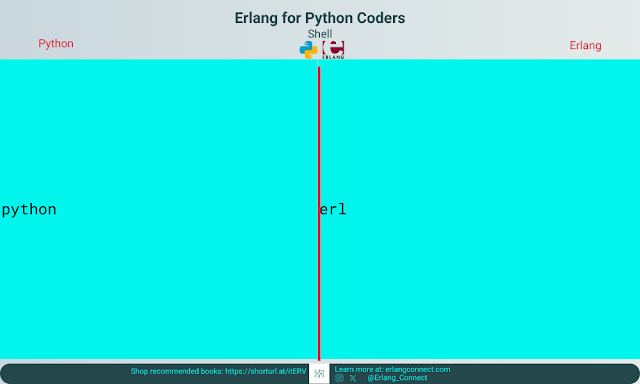Exploring Interactive Shells: Python vs. Erlang
Programming is not just about writing long scripts and running them. It often involves tinkering, experimenting, and learning from immediate feedback. This is where interactive shells come into play. Today, we'll delve into the interactive shells of two fascinating programming languages: Python and Erlang.
Python's Interactive Shell
Python, known for its simplicity and readability, offers an interactive shell that allows you to enter and execute Python commands directly.
Starting the Python Shell
You can start the interactive Python shell by simply typing python in your command-line interface (CLI), Terminal, or Command Prompt.
pythonOnce you're in the Python REPL (Read-Eval-Print Loop), you can write any Python command, like:
>>> print("Hello, World!")
Hello, World!Python's shell provides immediate feedback, making it an excellent tool for beginners to learn and experiment.
Erlang's Interactive Shell
Erlang, on the other hand, is a concurrent programming language that excels in distributed systems. It also offers an interactive shell that’s perfect for running and testing code snippets.
Starting the Erlang Shell
To start the Erlang shell, you need to type erl in your CLI.
erlNow you can compile and run Erlang functions directly, like:
1> io:format("Hello, World!~n").
Hello, World!
okThe Erlang shell is more than just a command prompt; it's a fully-functional environment where you can define modules, compile code, and even manage distributed nodes.
Comparing the Two Shells
- Ease of Use: Both shells are straightforward to launch and provide instant feedback. Python's shell is generally considered more beginner-friendly, while Erlang's shell offers more advanced functionalities.
- Functionality: Erlang’s shell offers an extensive range of capabilities like hot code swapping and distributed programming. Python's shell is more conventional but is highly extendable through various libraries and modules.
- Community and Resources: Both Python and Erlang have active communities, with numerous resources available to help you learn and explore their shells further.
Conclusion
Interactive shells are vital tools for programmers. They foster experimentation and deepen understanding. Whether you are using Python's shell for general-purpose programming or Erlang's shell for concurrent and distributed systems, knowing how to utilize these tools will enhance your coding experience.
Feel free to dive into Python or Erlang's interactive shell. Join our community at Erlang Connect or follow us on Facebook and Twitter for more insights into functional programming, Erlang, and Elixir.
Happy coding! 🚀



Comments
Post a Comment